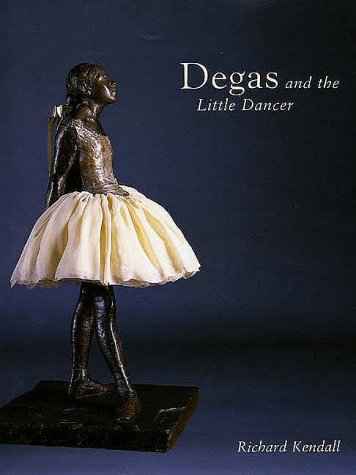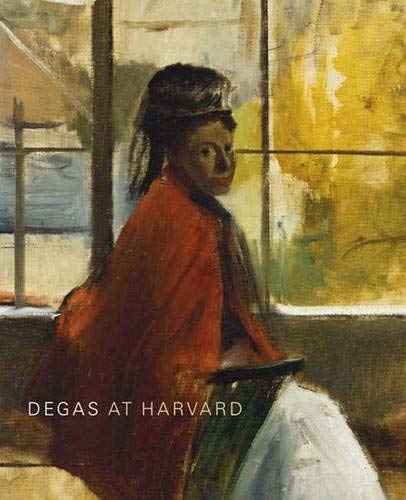
In his NYT review of the exhibition Degas at Harvard, Holland Cotter describes Edgar Degas as “a contrary, difficult man: a sociable misanthrope, a shy egomaniac, a cosmopolitan nationalist, an egalitarian snob. As an artist, he was constantly pulled between aesthetic extremes: reaction and revolution, past and present, fantasy and life.”
Degas showed little concern for the established techniques of the Parisian art academies. He experimented with new techniques, e.g. from Japan and new subjects, previously ignored by the art elite.
The French painter and sculptor Edgar Degas was born Hilaire Germain Edgar De Gas in Paris on July 19, 1834. He was the oldest son of Auguste De Gas, a wealthy French banker with Neapolitan origins, and Célestine, his Creole wife from New Orleans. The family name “Degas” had been changed to “De Gas” in order to sound more aristocratic. Edgar went back to the original spelling in the 1870s.
Degas’ mother died young, in 1847, leaving young Edgar in a state of shock. From 1845 to 1852, he frequented the lycée Louis-le-Grand in Paris. After this classical education, he enrolled at the faculty of law at the Sorbonne in 1853.
At the same time, like so many other art students before and after him, Degas copied the great masters in the Louvre in order to develop and improve his skills. His father encouraged his artistic ambitions.
As Jean Auguste Dominique Ingres (1780-1867), one of the foremost painters of his time, Degas believed in the primary importance of drawing, as opposed to Eugène Delacroix (1798-1863), who emphasized the importance of color in painting. Through the father of a friend – the Valpinçon family owned Ingres’ Grande Baigneuse painting – Degas managed to meet Ingres in the flesh. Still, Degas admired both artists and later collected their works. Degas described himself later as a “colorist with line” combining the influences of Ingres and Delacroix in his own work.
In 1854, Degas cut short his studies at the Sorbonne and took lessons with the painter Louis Lamothe (1822-1869), himself a disciple of Ingres. In 1855 and 1856, he frequented the Ecole des Beaux-Arts where Lamothe taught. However, Degas found the academic courses too restricting and decided to study art on his own, copying the old masters in the Louvre and traveling to Italy to confront himself with Italian art.
From 1856 to 1859, Degas traveled through Italy, where his sister lived. He mostly stayed at the houses of relatives in Naples and Capodimonte. In Rome and Florence, he studied the masterpieces by Italian artists such as Botticelli and Raphaël and worked, together with other young French artists, at the Villa Medici.
In 1859, he returned to Paris, where he opened a studio, painting historical subjects and portraits. He quickly managed to establish himself as a sought after painter. He returned to Naples and Florence in 1860, where he created the history painting Jeunes filles spartiates provoquant des garçons à la lutte (The National Gallery, London, where it is called Young Spartans Exercising) and Sémiramis construisant Babylone (c. 1860-62).
During the 1860s, Degas began collecting Japanese woodprints (ukiyo-e), which gradually influenced his style. He particularly studied Katsushika Hokusai’s (1760-1849) Manga.
Among Degas’ friends were Paul Gauguin, whom he supported by buying some of his artworks, and the American impressionist Mary Cassatt, whose father was a wealthy banker too. She was Degas’ model for several prints and paintings. Both, Cassatt and Gauguin were, like Degas, influenced by Japanese art.
In 1862, Degas met Edouard Manet, a master of themes of daily life as well as of still life painting. Another acquaintance was the novelist Edmond Duranty, an advocate of realism. In consequence, Degas abandoned the historical genre and turned to daily life.
In 1866, Degas made his first horse race paintings (Steeple-Chase), which became one of his famous subjects. Horse racing had been introduced in France from England in the 19th century. The Jockey Club was inaugurated in 1833, the Longchamp stadium opened in 1857. The upper class who frequented the opera could also be found on the race tracks.
In 1869, he joined Edouard Manet in Boulogne and Saint-Valéry-en-Caux, where he painted some landscapes. In 1870/71, he served in the French artillery in the Franco-Prussian War. He enriched his work by introducing elements of plein air painting. However, he never turned to landscape painting. But the plein air movement and the influence of impressionism made him renounce on an official career in the French salons with their academic style.
In 1872, Degas exhibited, together with the Society of French Artists, in a London show organized by the famous art dealer Durand-Ruel, before leaving for New Orleans.
In 1873, Degas traveled to North America, where he spent quite some time at his brother’s home in New Orleans. Among the works created in the US is The Cotton Exchange at New Orleans (1873; Musée Municipal de Pau, France). This was his only work purchased by a museum during his lifetime.
The following year, Degas participated with ten paintings in the first exhibition by the Impressionists. Subsequently, he exposed his paintings in another five Impressionist exhibitions. The last one he participated in was held in 1886. Afterwards, Degas distanced himself from this group of artists.
It was only in the 1870s that Degas turned to the subjects which make his fame today: opera and ballet, dancers and singers. He did not only portray what went on on stage, but included unusual subjects such as teenage ballet dancers in rehearsal rooms as well as scenes of everyday life, including washerwomen, subjects ignored by the French academic art scene of his time.
The unmarried Degas had a penchant for girls and young women. But even his intimate bathing scenes, although with a voyeuristic touch, do not fulfill sexual desires, have no touch of eroticism. Instead, they are innocent and delicate, even when they depict reality. Degas became a master of the intimate moments and details such as ballet rehearsals, baths or café scenes. His paintings and pastels often capture the moment. In this, he was in advance to the then still young art of photography.
It was only in the 1870s that Degas’ use of Japanese woodprint and other graphic techniques became visible in his style, e.g. juxtapositions of near and far planes.
Degas enthusiasm for opera and ballet went beyond teenage dancers since the composers Emmanuel Chabrier and Ernest Reyer were among his circle of friends. Although amorous affairs by members of the upper class with poor young dancers were quite common at his time, there is no evidence that Edgar Degas ever had such a liaison.
As his family went through financial troubles, Degas had to live from the money he made as an artist. In 1874, his father died. In order to pay off the inherited debt, Degas was forced to sell parts of his art collection. As a result of the financial difficulties, Degas began creating monotypes, a quick way to create graphic art and ideal to be used in combination with pastels. In 1881, he created my favorite Degas bronze by far, the only sculpture he exhibited during his lifetime, the Little Dancer, aged fourteen.
In the 1880s Degas’ eyesight was failing. In 1889, he went blind. Therefore, he turned to sculpture and created some seventy works of nudes, dancers and horses. In 1908, he gave up art completely.
In 1912, Rouart auctioned off his painting Danseuses à la barre, which sold for the highest price ever paid in France at that time for a living artist. Edgar Degas died on September 27, 1917 at the age of 83. He is buried in the Cimetière du Nord, commonly called Cimetière de Montmartre.

Marjorie B. Cohn, Jean Sutherland Boggs: Degas at Harvard. Yale University Press, October 10, 2005, 127 p. Order the exhibition catalogue from Amazon.com, Amazon.co.uk.

Recommended book: Richard Kendall et al.: Degas and the Little Dancer. Yale University Press, 1998, 192 p. Catalogue for an exhibition at the Joslyn Art Museum, Omaha, in 1998. Get the book from Amazon.com, Amazon.co.uk.
Article added on November 1, 2005. On July 19, 2019, this article has been divided into Degas at Harvard and this Biography of Edgar Degas.